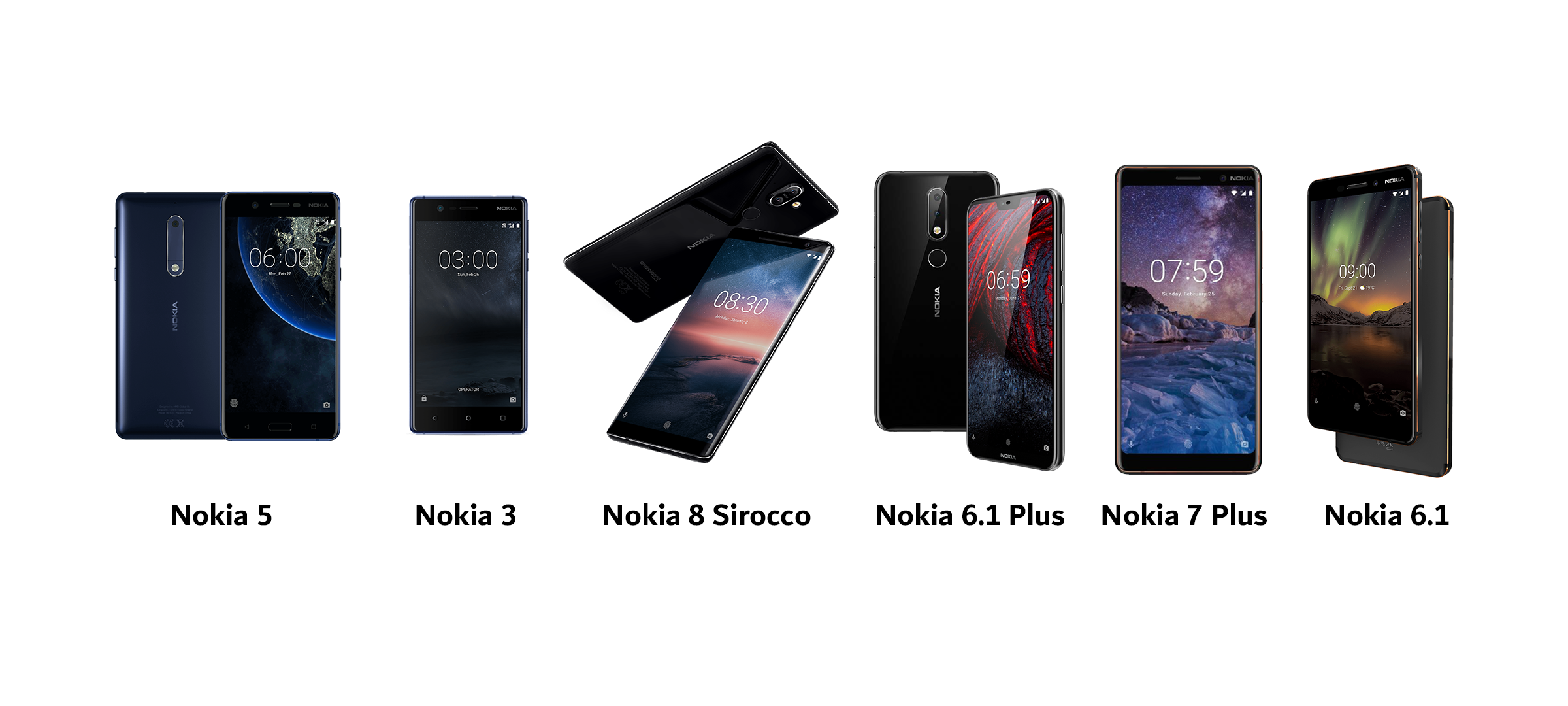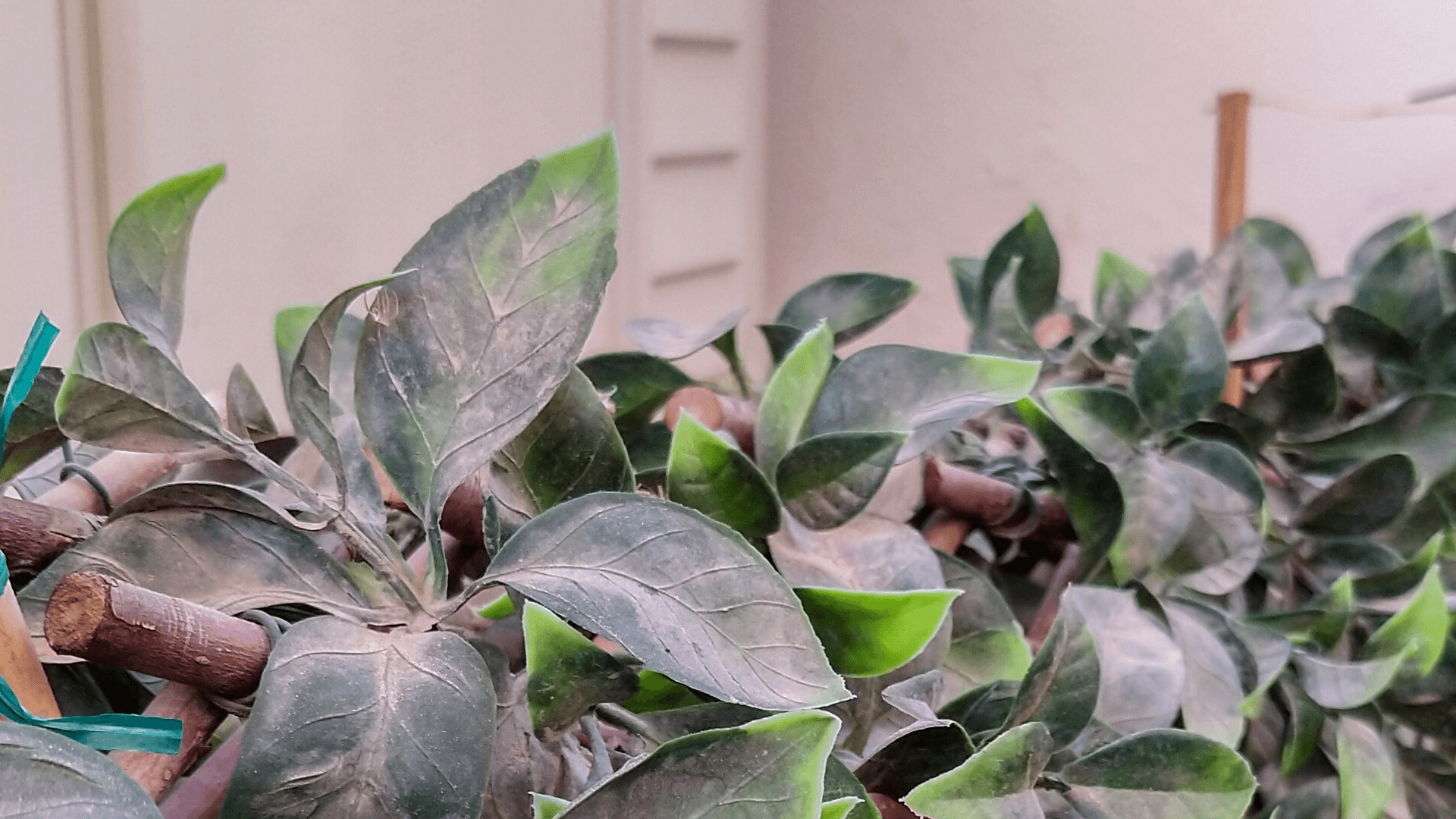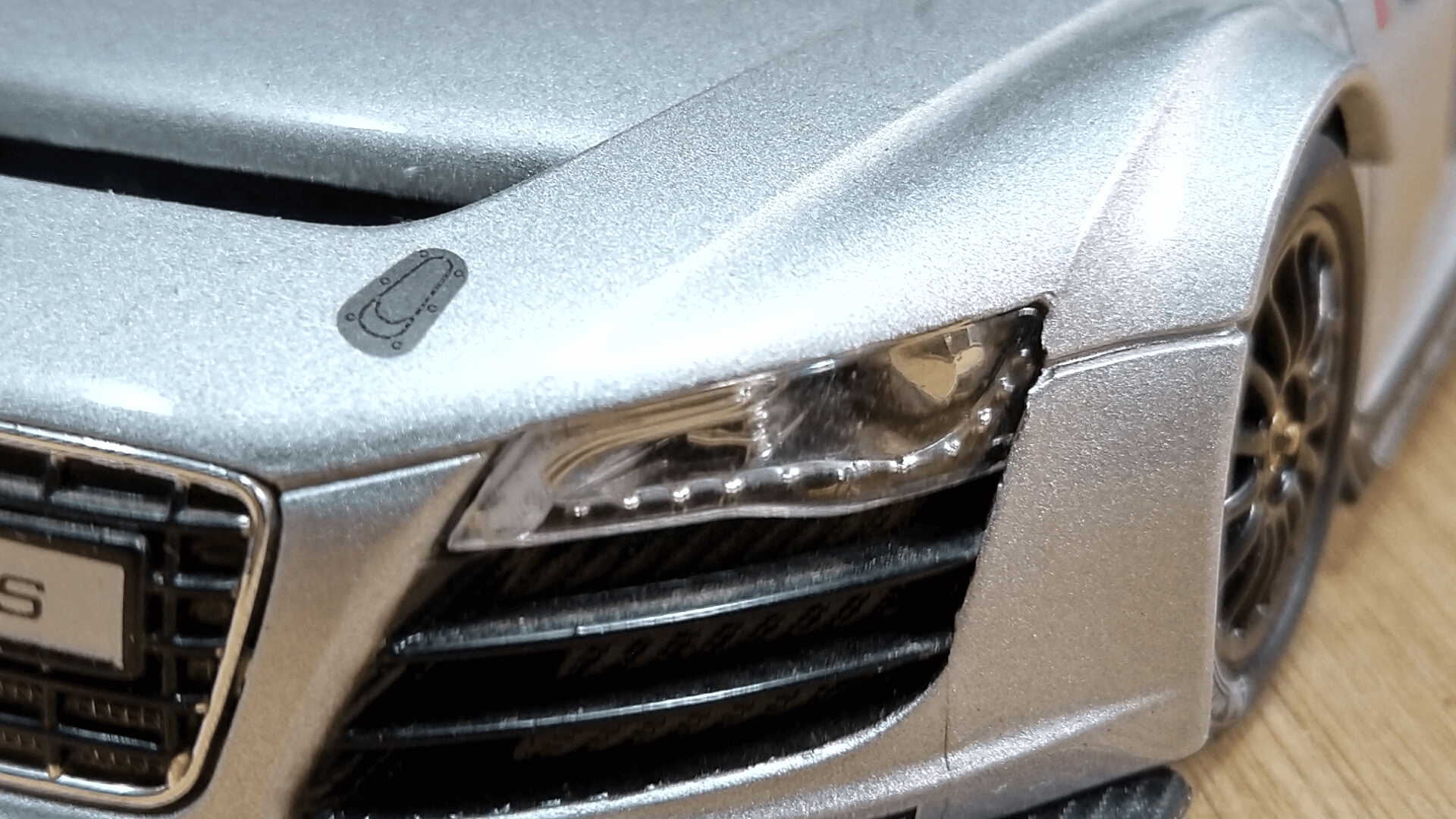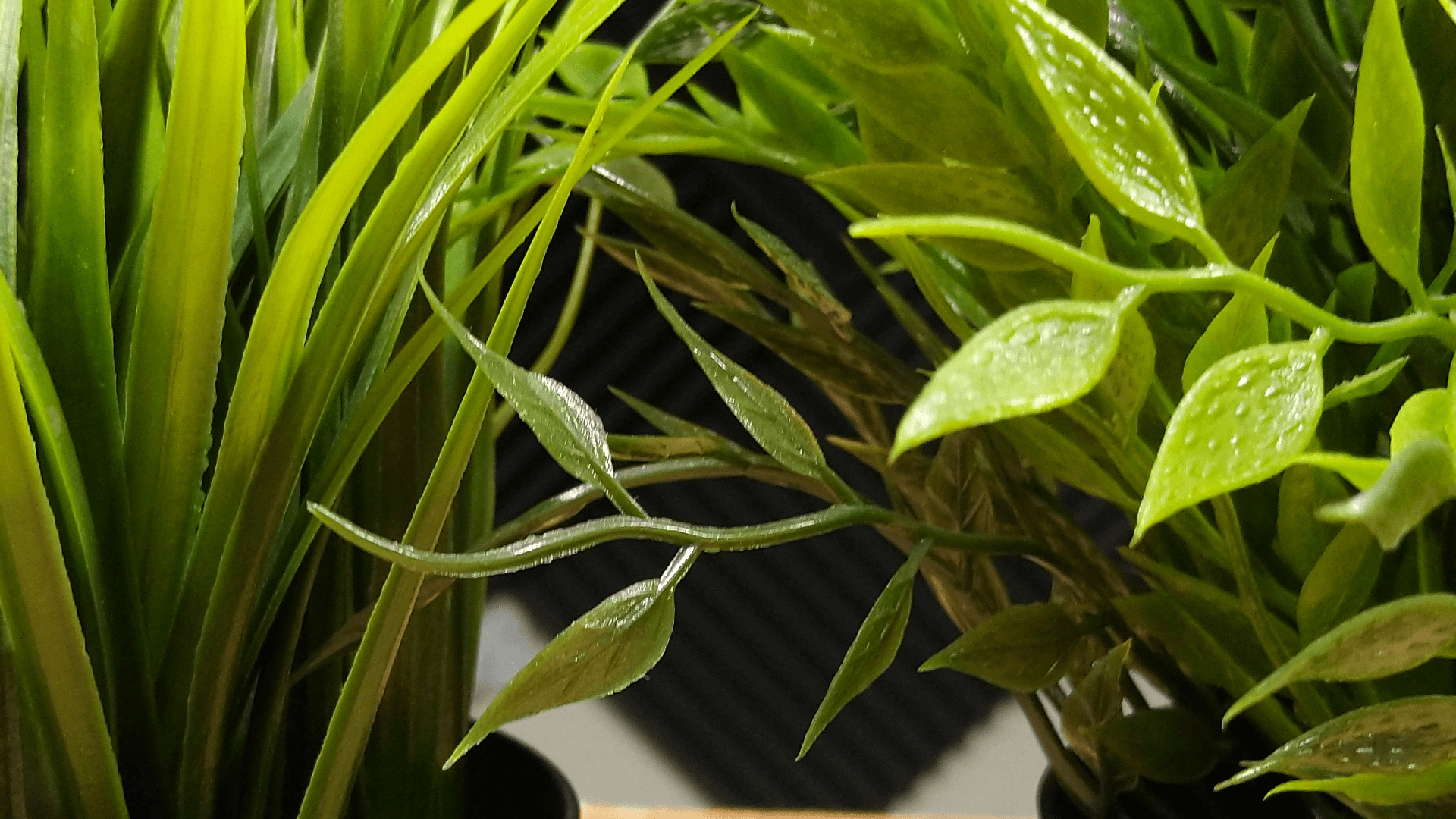
Specs
- Display: 5.84″ IPS LCD 1080 x 2280 pixels (432PPI), Gorilla Glass 3
- OS: Android One 8.1 Oreo (Updated to Android 9.0 Pie)
- CPU: Qualcomm Snapdragon 636 Octa-core (1.8GHz Kryo 260)
- RAM: 3GB (32GB internal storage) / 4GB (64GB internal storage)
- GPU: Adreno 509
- Internal storage: 32GB / 64GB
- Rear Camera: 12MP (f/1.8) + 5MP (f/2.4), 2160p @ 30fps video
- Front Camera: 8MP f/2.0, 1080p
- Waterproofing: None
Packaging

The Nokia 7.1 comes in a familiar-looking box as it follows the same design as practically all of their other models – a simple square design which features a full colour image of the device on the front.
It’s minimalist without looking skimpy.
What’s in the box?
- Nokia 7.1
- Stereo earbuds
- Charging / data cable
- Wall charger (fast charging)

Accessories
Essentially we get just the bare minimum included with the 7.1, but then again, you don’t exactly need much more.
The included earbuds is a nice touch, but you could very easily and affordably replace them with something like the MEE M6 Pro 2nd Gen for a much better audio experience. That is, they sound OK-ish for a set of bundles earbuds, but I wouldn’t use them.
Unfortunately there is no protective cover of any sort included (which is a must-have in my opinion for devices that have a glass panel on the rear).
Design
When we talk about the design of Nokia’s devices, I kinda think back to the older Samsung Galaxy models. I refused to own one because they just felt like these really light, hollow, flimsy, plasticky toys. Even though, in terms of the hardware specs they were great devices, but they simply never felt like well-built devices in the hand.
So, as a result, I found myself naturally gravitating towards the likes of a few HTC models, and whatever else didn’t feel like a toy.

So, I must admit that I’m a massive fan of Nokia’s latest devices, especially when it comes to the design and build quality. Save for only their ultra-cheap models, all of their other models not only look, but also feel like premium-built devices. We’re getting loads of metal and glass, as well as some bevelled edges. It just gives you that immediate sense of having spent your money well. It feels solid without feeling overly heavy, if that makes sense.


When it comes to the Nokia 7.1, I can gladly say that Nokia have not only carried this trend over, but they’ve improved and refined the design as well.The 7.1 features glass on the front, as well as glass on the back, just like the company’s current flagship, the Nokia 8 Sirocco. But, unlike the Sirocco, the 7.1 has less sharp, more bevelled and rounded edges. In essence, this feels like a mix between the Sirocco and the Nokia 7 Plus. And, to be perfectly honest, I much prefer this design over that of the Sirocco.The Sirocco is a very well-made device, but those sharp edges just make it so that it never feels like it sits in your hand securely enough. In the back of your mind there’s always that little bit of an anxiety that it’s going to slip out of your hand any minute now.
In contrast, the 7.1 just fits and feels like such a natural device to hold. The button placement also feels very good, and at no point did I experience any awkwardness.
What I particularly like about this specific model is the colour. When you’re indoors, you don’t really notice the colour because of how subtle that blue is.

It’s a dark blue, not really navy blue, but perhaps midnight blue. It’s only under stronger lighting conditions that you realise that it is in fact a blue colour, not black.
On the rear is where we find the dual camera which comprises of a 12MP main lens, along with a 5MP secondary lens. Just below this is the fingerprint sensor. This is one of the best fingerprint sensors I’ve ever used. It’s just so damn quick to read my finger. There is a bit of a delay between the reading and when the display turns on, but that’s something we’ll cover a bit more when we talk about the software.

But, for now, all I can say is that this fingerprint sensor does seem very accurate and reliable.
Flipping the 7.1 over onto the front we immediately spot a design element that has become quite popular this year – the notch. As someone who has a couple of OCD tendencies, I honestly thought that this would bother me much more than what it actually did.


I also really like the rounded corners of the display, and I think it fits in well with all of the other rounded elements of the device’s design.I think the only thing that I found a little annoying was the placement of the Nokia logo.
We’re so used to seeing the branding of a device along the top portion of the front panel, so for the first 2 or 3 days I constantly found myself picking the 7.1 up upside-down.
When we take a look under the hood things can become a little confusing. Nokia doesn’t seem to be taking a clear and direct upgrade path as you move up their model-list.
For example, here you’ve got a choice of either 3 or 4 gigs of RAM depending on the amount of internal storage. This was the same for the Nokia 6.1.
But if we look at the 7 Plus, there you had a fixed amount of 4GB of RAM, and with the previous Nokia 7 you had a choice of either 4 or 6 gigs of RAM.
To confuse matters even more, the 7 Plus was equipped with a Snapdragon 660 along with an Adreno 512 GPU, whereas the 7.1 has the Snapdragon 636 and Adreno 509.
So, at first we might assume that the 7.1 would be an upgrade over both the 7 and 7 Plus, but that’s not necessarily the case.
Software
When we take a look at the software, this is, in my humble opinion, a huge part of what makes Nokia’s latest devices so great. It’s not about what they’ve done with Android, but rather what they haven’t done.
As is the case with the Sirocco, the 7 Plus, the 6.1, the latest 8.1, and a bunch of Nokia’s other devices, the 7.1 is part of the Android One programme.
Now, there is a fair amount that we could talk about with regards to exactly what Android One is, but all you really need to know is that it’s Android in almost it’s purest form. It’s kind of like having a Pixel device, but Nokia have tweaked things just a little bit here and there to ensure that you’re getting the most from the camera and so forth. What this also means is that you’ll be getting Android updates far more frequently than what you would on something like a Samsung or Sony device. In fact, whilst this device was released in October with Android 8.1, around a month later it was updated to Android 9 Pie.
In essence, it’s reliable, reasonably smooth, and up-to-date.
Daily usage
So, when I said that this is about what Nokia has not done, what I’m referring to is the fact that they haven’t applied various resource intensive customisations and skins as would be the case with a Samsung, Sony, or HTC device, for example.
By tweaking Android as little as possible, this has 2 major advantages, both of which contribute to a satisfying experience in terms of daily usage.
The first is that this gives you a fluid and simple Android experience during day-to-day use. But what it also means, and this is perhaps the most important bit, is that a lighter operating system doesn’t require an ultra-fast CPU or a gazillion gigs of RAM.
So, even though the 7.1 is only spec’d with a Snapdragon 636, and either 3 or 4 gigs of RAM, you still get a reasonably fluid and responsive user experience. There’s very little lag when actually launching an app, but there is a little lag before some apps are fully loaded.
Of course, you could always head into the developer options and disable the screen animations which would speed things up a bit. Also keep in mind that this particular review unit has 32GB of internal storage, which means that it’s also only equipped with 3 gigs of RAM. So I’m sure the extra 1 gig of RAM on the 64GB model would definitely make things a bit snappier.
The only area where I can say that I definitely felt the 7.1 being held back by the hardware is when it came to launching multiple apps and keeping them in memory. Maybe this is due to the CPU or the amount of RAM, or a combination of both, but unfortunately, the 7.1 isn’t particularly good at multi-tasking with reference to keeping apps running in the background.
Overall, I would have no problem using the 7.1 as my daily driver. It’s certainly not spec’d like a flagship, but the responsiveness in regular daily-usage scenarios doesn’t feel as far off from a flagship either.
If you’re not a gamer or heavy multi-tasker, then the 7.1 feels perfectly adequate for daily usage.
Camera




The camera, on the other hand, is one area where we would expect to see some compromises, and we do. If you depend on having an outstanding camera for your daily needs, then the 7.1 isn’t going to do it for you. It’s not a bad camera by any means, but it just wouldn’t be reasonable to expect the same quality as you would get from a flagship device from Samsung, Apple, or indeed Nokia’s own Sirocco.The auto white balance does a reasonably good job at detecting which colour temperature is needed, but I find that the camera software does tend to struggle somewhat with selecting the correct exposure, often resulting in some blowouts in the highlights. Thankfully there is a Pro mode that allows you to manually adjust the white balance, focus point, ISO and shutter speed. This does help to get some better imaging results, but the vast majority of people don’t want to be tinkering around with the manual controls each time they pull out their phone to snap a pic. That just pretty much defeats the whole purpose in terms of convenience of having a camera on a phone.
But, for what it’s worth, the 7.1 does a reasonably good job in natural daylight scenarios.
Again, if you don’t care about taking super great shots, then the 7.1 will probably suffice for most scenarios.
Value
Value is something Nokia knows extremely well how to pack into their devices. When I look at, hold, and use the 7.1 I’m genuinely having a hard time coming to terms with the fact that this device costs just $260.
Like, how? How can they manage to make such a well-put-together device for such little money and still turn a profit?

When I first held the device and looked up the price there was one thing that immediately sprang to my mind.
In one of the episodes of Mad Men the agency was tasked to come up with an ad campaign for Jaguar. Eventually, the tagline that they came up with was “At last, something beautiful you can truly own”.
Now, the reason why they came up with that specific tagline may have been under a very different context, but the sentiment is the same for me when I look at this device.
As I said, the 7.1 doesn’t come with super high-performance specs, but the days where there was a substantial gap in the look and feel between flagships and more affordable devices is officially over.
Nokia has proven with the 7.1 that everybody can truly own a premium device, even at an affordable price.

